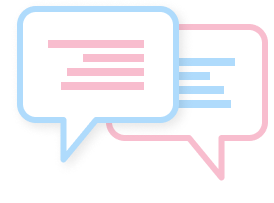Today, a conversation about trends in commerce that does not talk about bitcoin would certainly be incomplete. Already in this blog, we talked about bitcoins and the expectation around this cryptocurrency, but now I would like to talk about the technology that supports bitcoin, that is, the blockchain.
As I write this article, Nasdaq has announced that it will begin experimenting with using the blockchain to record transactions. But blockchain applications are not reduced to the financial sphere. For example, the DemocracyOS platform is considering taking advantage of this technology to register citizen voting. The article “Blockchain 2.0: The renaissance of money” published by Wired in January of this year puts it this way: “Bitcoin, altcoin, dogecoin… who cares? The only thing that matters is the blockchain. ”
So we have to make sure we understand what it is, how it works and how it could be applied in other fields.
Fundamentals
The central aspect on which the design of the bitcoin system is based is that there is no central authority. Given this, a mechanism is required to determine who owns what currencies. This mechanism must be distributed (distributed among a network of nodes) and resistant to attacks that want to alter its integrity. This is the role that the blockchain plays. It is a log where all bitcoin transactions are recorded that are shared by all the nodes that participate in the bitcoin network. In other words, the blockchain is a distributed transactional logbook, and in the case of bitcoin, it becomes the equivalent of its accounting ledger (ledger).
The blockchain is managed by the network of nodes of the bitcoin system. These nodes are continuously spreading transactions of the type: the sender X sends Y bitcoins to the receiver Z. The nodes validate the transactions, add them to their copy of the accounting book, and spread these new transactions to other nodes. Each network node has its copy of the blockchain. Approximately every 10 minutes a new block is created that contains a group of accepted transactions, the block is added to the chain, and sent to the rest of the nodes. The process of calculating the blocks to be added to the chain is what is known as mining. It is a process designed to be computationally intensive so that the number of blocks found every day remains constant.
The blockchain algorithm was invented specifically for the Bitcoin system, but it can be applied in any other case where it is required to establish a distributed consensus in the presence of malicious or unreliable actors.
Guaranteeing Integrity
As the name implies, the blockchain is a blockchain. The chain goes from the initial block (genesis) to the most recent block. Thus, a complete copy of the blockchain contains all the transactions made in a system throughout its history. From this information, it is possible to determine the value that corresponds to each system address at any point in history.
To implement this chain, each new block contains a hash of the previous block. This guarantees a chronological order since a new block requires knowing the previous block to determine its hash. Once a block is part of the chain, all subsequent blocks have a trace of that block, so if we wanted to alter a block, its hash would change and therefore all subsequent blocks would have to be regenerated, which makes it impractical computationally and therefore it is a protection mechanism to avoid data alteration.
We may have our opinions about bitcoin and its viability, but it is a fact that blockchain technology works and is effective for its purpose. A blockchain can be used to digitally sign any type of sensitive information, without the need for a central authority. This, for example, can be applied in the management of contracts, guarantee deposits, authentication, etc.
Colored Coins
Imagine that we add notes to our bitcoins to indicate that they represent a certain asset. This is what is known as colored coins, and it is a mechanism that allows you to use the blockchain to store and manage the ownership of assets that are not bitcoins. For example, we could manage the capital stock of a company in the blockchain by coloring coins representing shares and distributing them among shareholders. The shares could then be traded immediately and without transaction costs. We can also represent real estate as colored coins. Then, you can put your house in a bitcoin, and transfer ownership of your house through a simple transaction in the bitcoin network.
Colored coins is a service for coloring coins, that is, creating digital assets over the bitcoin network. So if you want you can get romantic, put your heart in a bitcoin and transfer it to your beloved.
Smart Contracts And Programmable Money
One of the fields of application for the blockchain is that of smart contracts. This consists of creating programs that can handle money automatically. When creating a contract, certain conditions or criteria that must be met are defined, and the actions (transactions) that are triggered when the criteria are met. When a transaction is made between two parties, the program verifies that the product/service has been satisfied, and only if the criteria are met then the amount of money is transmitted to the supplier’s account. In this way, a real-time guarantee deposit service is obtained with an operating cost close to zero.
If you are interested in smart contracts, I recommend you take a look at the Codius project. It is an open-source platform to host intelligent programs that manage contracts, cryptocurrencies or other assets. Another project that seeks to establish a platform for decentralized applications is Ethereum, which involves a new cryptocurrency, a programming language and a new browser designed for this protocol.
Intellectual Property Management
Another interesting application of the blockchain is to share and manage the use of an intellectual property.
For example, ascribe is a service that uses the bitcoin blockchain to allow artists, galleries, and collectors to register, transfer and archive digital art. Artists register their works in a distributed intellectual property registry that is publicly accessible. The works are stored in the cloud and credited to the artist. Each version of the work receives a unique cryptographic identifier that is inseparable from the original version.
The founder of ascribing recently commented in an article published in Forbes that a similar approach would also be very useful to manage the rights of other artistic works, such as music or movies, allowing to track their use and therefore adequately compensate The rights owners. For example, if you are an artist, you can assign the rights to your work to a label and monitor through the blockchain how the label exploits your works (sales, licenses, streaming, etc.). This would minimize the controversy and transaction costs regarding the payment of royalties. But beyond that, it would make it easier for artists to share, manage and directly monitor the use of their works.
Applications of blockchain technology within the financial system
Its applications within the financial system beyond Bitcoin are many, hence it has aroused so much interest among banks and other financial entities.
According to the World Economic Forum, in the coming years, we will witness an important transformation in which the blockchain will eventually become the “heart” of the future global financial system. And 80% of banks have recognized that they are already working on the development of products based on this technology.
Among its applications are:
- The possibility of expediting payments and transfers and sending remittances, significantly reducing their cost: for example, the American startup Abra is developing a global digital asset management system, with retail banking functions such as payments and savings and based on the Bitcoin blockchain that already allows, among other things, the almost instantaneous sending of remittances to other countries from the mobile and for about 0.25% of the current cost.
- Stock markets: for example, Nasdaq already uses blockchain technology in its private stock market, one of the largest in the world.
- Decentralized prediction markets: Augur is a decentralized prediction market that allows its users to buy and sell shares in anticipation of an event based on the likelihood of one or the other outcome.
However, the applications of blockchain technology are not limited to the financial system, but they are much more varied.
Applications of blockchain technology in other fields
1. Distributed Cloud Storage
Instead of relying on centralized cloud storage services, such as Dropbox, Amazon or Google Drive, blockchain technology offers the possibility of storing data or files in a P2P ( peer-to-peer ) network, that is, they are saved by multiple members of the network.
In today’s centralized systems, all the information or files are stored in the same space, so it is much easier to be attacked by a hacker or to lose information due to a technical problem or natural catastrophes, such as fire or flood.
In distributed storage, on the other hand, files and information are stored similarly to the P2P systems used by programs such as Torrent or Emule, that is, an identical copy is stored in each node of the network.
Anyone on the Internet can store your information in exchange for a previously agreed price and, having multiple copies in different places on the network, the system is much safer. Once encrypted, the information is sent to the network incorporating metadata that allows you to track each step that the file takes.
Storj, for example, has developed such a system in which users who have space to spare on their disks can automatically rent unused space to other users who need it, while those who need space to store their files can Pay to do it on other users’ computers. According to the company, its system will reduce data storage costs by up to 80%.
In addition to Storj’s, there are other systems such as Tahoe-LAFS, Datacoin or Factom.
2. Identity management
Blockchain technology allows users to create their own tamper-proof digital identity. According to experts, this kind of blockchain-based ID will soon replace online usernames and passwords. We can use our blockchain identity to access applications and websites, sign digital documents, etc.
There are already some companies that offer this type of service, such as Onename, Keybase or ShoCard. There is also an initiative called “Blockchain Emergency ID” by Bitnation, which provides an emergency digital ID to immigrants and refugees whose passports have been confiscated or lost in their path. To do this, it creates a network of trust in which the members of each family verify the identities of the other members.
3. Registration and Verification of Data
Just as bitcoin transactions can be immutably stored in the blockchain, this technology can be used to store any other type of information, thus generating an unalterable distributed record, much safer than traditional databases, which have to be managed by a third party.
Companies like Tierion, Proof of Existence or Factom already offer this type of service. Its possibilities are enormous both in the business sector and the public. For example:
- In clinics and hospitals: to create a record with patient data and medical history.
- In the property registry: to create a registry that shows who owns each property or land, as well as all the sales transactions made. In this way, any type of fraud or manipulation is avoided.
For example, Factom is collaborating with the Honduran government in the development of a blockchain-based program to manage land ownership registration; and the Republic of Georgia has partnered with Bitfury to develop property titles based on blockchain technology for the country’s National Public Registry Agency. The government of Japan has also announced that it will unify all records in a single property and real estate registry based on blockchain and in Europe, Sweden is already testing such a system.
- For vehicle registration.
- For the protection of intellectual property and the creation of creative digital products, such as music, photos, electronic books, etc. If we have an original work of our own in digital format we can encrypt it and store it as a transaction in a blockchain designed For this purpose, the authorship and the date on which it has been registered will be registered. Some companies, such as Proof of existence, already offer this type of service.
- Birth and death records, marriages and divorces, etc. The Estonian government, one of the most progressive in technology issues, is working with Bitnation to allow residents with digital identity to register their marriage unions and birth certificates on the Horizon blockchain. And Kim Jackson and Zach got married on the blockchain in November 2015, although at the moment it’s only symbolic. An advantage of these systems in the future is that they will constitute legal proof of marriage internationally.
- You could even create an international criminal record.
- Other examples at the private level: all Slack conversations of a company could be stored in a log; track all orders of a company from the moment of purchase until the user receives the product at home; create a verifiable audit record of insurance claims; etc.
4. Automatic Execution of Contracts
Some blockchains include the possibility of creating “smart contracts” (smart contracts) that, despite what it seems by name, are not smart at all.
These are mere software programs that collect the terms of a contract between the parties and are stored in the blockchain, with the peculiarity that they are self-executed when a series of conditions specified in the contract itself are met.
This avoids intermediaries, lightening costs and bureaucratic delays; as well as any type of interference by a third party.
The possibilities of this functionality combined with other new technologies such as the Internet of things and financial technologies are enormous. For example:
- The information on a sales contract could be connected to a GPS so that the smart contract automatically issues the payment to the supplier and the carrier when the package arrives at its destination.
- Or draw up a smart contract for the lease of a vehicle that in case of non-payment of any of the receipts prevents the driver from starting the vehicle or accessing it. And in the future, in the case of an autonomous vehicle, the car could even return only to the company that owns the vehicle that offers the lease.
- It could also transform the world of music. The British singer Imogen Heap intends to use blockchain technology so that musicians can grant licenses to use their music and receive the corresponding payment without the need for numerous lawyers, accountants, and intermediaries involved.
- In this way, artists could receive more money for their work (everyone who now takes the intermediaries) and the distribution of benefits between all parties involved would be much more transparent and reliable.
5. Monitoring of The Supply Chain and Proof of Provenance
Nowadays it is common for each part of a product to come from different places or companies. An entire supply chain is thus established until reaching the company that assembles or produces and markets the final product.
Sometimes the chain is so long that it is difficult to fully monitor the entire process.
Companies are already using blockchain technology to do this type of monitoring and guarantee the origin of different products: from food ingredients or agricultural products to diamonds, works of art and, practically, anything else that requires it.
In this way, the blockchain offers a solution to counterfeits and can facilitate the traceability of products to obtain a certification (for example, an organic product).
Recent Articles
The Top 10 Successful App Developers...
Hiring an app developers company is no easy feat. In...
Top 10 Innovative Mobile App Developers...
San Francisco has an incredibly diverse and a magnificent tech...
Top 10 Most Trusted Mobile App...
Houston boasts of a splendid tech landscape that is mushrooming...






